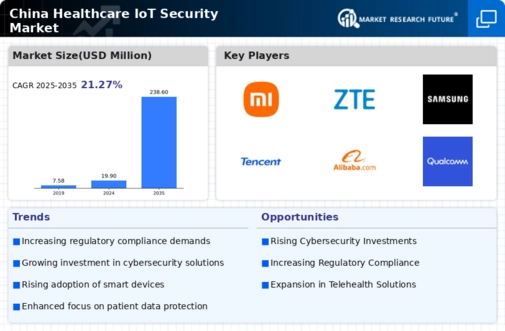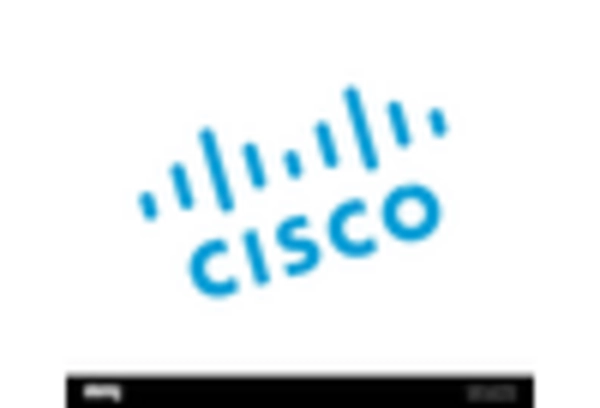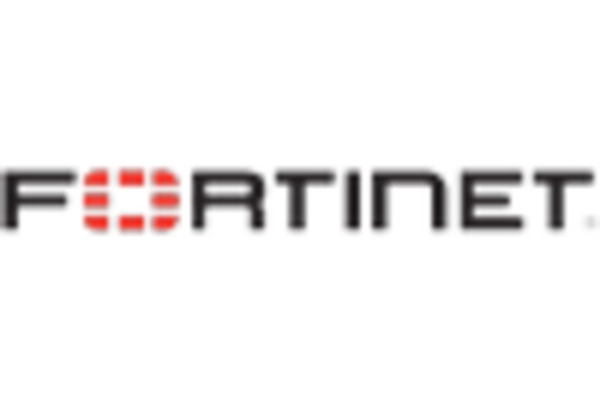The healthcare iot-security market is currently characterized by a dynamic competitive landscape, driven by the increasing demand for secure and efficient healthcare solutions. Key players are actively engaging in strategies that emphasize innovation, partnerships, and regional expansion. For instance, Cisco Systems (US) has been focusing on enhancing its cybersecurity offerings through strategic collaborations with local healthcare providers, thereby strengthening its market position. Similarly, IBM (US) is leveraging its expertise in artificial intelligence to develop advanced security solutions tailored for healthcare applications, which appears to be a significant differentiator in this competitive environment.
The market structure is moderately fragmented, with several players vying for dominance. Companies are adopting various business tactics, such as localizing manufacturing and optimizing supply chains, to enhance their operational efficiency. This collective approach not only fosters competition but also encourages innovation among key players, as they strive to meet the unique security needs of the healthcare sector.
In October 2025, Palo Alto Networks (US) announced a strategic partnership with a leading Chinese healthcare provider to implement a comprehensive security framework for IoT devices. This collaboration is expected to enhance the security posture of healthcare facilities, addressing the growing concerns over data breaches and cyber threats. The strategic importance of this partnership lies in its potential to set a benchmark for security standards within the industry, thereby influencing other players to adopt similar measures.
In September 2025, Fortinet (US) launched a new suite of security solutions specifically designed for healthcare IoT devices. This initiative aims to provide robust protection against emerging threats, reflecting the company's commitment to innovation in the sector. The introduction of these solutions is likely to enhance Fortinet's competitive edge, as healthcare organizations increasingly prioritize security in their digital transformation efforts.
In August 2025, Siemens Healthineers (DE) expanded its cybersecurity portfolio by acquiring a specialized firm focused on IoT security solutions. This acquisition is anticipated to bolster Siemens' capabilities in providing comprehensive security services to healthcare clients, thereby reinforcing its market position. The strategic move underscores the importance of integrating advanced security measures into healthcare technologies, as organizations seek to safeguard sensitive patient data.
As of November 2025, the competitive trends in the healthcare iot-security market are increasingly defined by digitalization, sustainability, and the integration of artificial intelligence. Strategic alliances are playing a crucial role in shaping the current landscape, as companies collaborate to enhance their technological capabilities. Looking ahead, it appears that competitive differentiation will evolve from traditional price-based competition to a focus on innovation, technology, and supply chain reliability, as organizations strive to meet the complex security demands of the healthcare sector.

















Leave a Comment